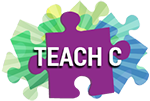Classroom Project Ideas

GPS
A simple GPS module can be used to improve programming skills by developing algorithms that range from simple data parsing to complex mathematics converting lat/long to feet. The basic interface is an excellent opportunity to develop a robust data communications module to issue commands and gather data. GPS Module

RFID
The CCS RFID modules have an RS-485 bus on them. This opens the units up for some great projects. One unit can be used to build a simple access control (key-card type) system or a logging system. Multiple units can be used to construct a system with multiple access points or to designate units and entry, exit and a master unit to learn or delete new key-cards. PC programming can also be added to the system by interfacing the RS485 bus to the PC where the system can be monitored or controlled. RFID Development Kit
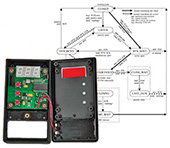
Complete Software Engineering Project
CCS can provide a kit (the sump kit) that is a complete software engineering project. The goal is to design a controller for a sump pump. Included is a formal software development specification like would come from an appliance manufacture. Guidelines are provided for software documentation, reviews, coding standards and special considerations. The initial specification is for a software base that works for two models plus two change request specifications are included for additional features to be added on to the project. To test the project in a classroom environment a PC based sump pump simulator is used and connected to the PIC® hardware.

DC Power Monitor/Control
CCS has a DC power monitor/control platform with a PIC® processor as the controller. This can be used as the basis for a large variety of programming projects. To use you will need a bench power supply that can vary the output voltage (at least 9-15V) and some 12V loads such as automobile lights.
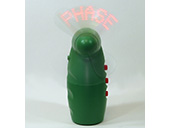
Message Fan
A spinning fan blade with a line of LED's can be used to display messages and patterns if the firmware can precisely light the individual LED's at the right time. This makes a great embedded programming project. Contact CCS for hardware.

Data Logging
Data logging can be used to develop a number of useful algorithms. For example compressing data to save memory when the input data is not changing, rotating NVM usage so the usage of all memory cells is evenly distributed and dealing with unexpected power fails.
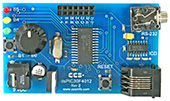
Digital Audio
CCS has several development boards that can be used to input analog audio, digitize the audio and output it as analog audio. This can be used as a basis to learn about audio processing including digital filtering, record/playback, and tone generation.
Smartphone Interface
The CCS EZ App Lynx development kit can be used to interface a PIC® program to a smartphone or tablet via Bluetooth® wireless technology. This presents a number of good opportunities for embedded programming. EZ App Lynx w/ RN4020 Development Kit
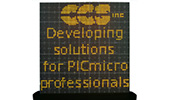
Advanced Co-processing
CCS has a 4" x 4" PCB with a PIC® MCU, 64 LED's and connectors on each of the 4 PCB sides. These boards can be plugged into one another to make a larger LED matrix. The programming challenge comes in by coordinating the processors on each board to perform a common task. 810 MIPS Multi-Processor Demonstration
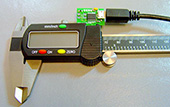
Hacking
CCS has documented a project that uses an inexpensive digital caliper and adds a USB interface to it to show the data at a PC. A number of techniques and technologies can be learned form this experience. CCS can provide hardware in addition to the detailed methodology used. CALHACK

RF Networking
The CCS Zigbee™ modules can be used to establish a local RF mesh network.
Simple GPS modules can be used to improve programming skills by developing algorithms that range from simple data parsing to complex mathematics converting lat/long to feet. The basic interface is an excellent opportunity to develop a robust data communications module to issue commands and gather data. CCS Wireless - Ember ZigBee™ Edition

Ultrasonic Distance Measurement
A 50khz ultrasonic transducer can be used to generate a short burst from the PIC® MCU. The PIC® MCU can then time the gap until a echo is heard the distance can be calculated. This is simple in concept however presents some excellent embedded programming opportunities.

WiFi
Use the CCS WiFi development board to create a number of Internet projects. The PIC® MCU can be a web server or any number of clients. Wi-Fi (3.3V) EZ Web Lynx Development Kit

Robot Car
The CCS Robot Car development kit is for building a robotic car used for playing soccer. The board includes proximity sensors, line sensors, motor drivers, an electronic compass, a speaker, and a Bluetooth® socket. Robot Car Development Kit
